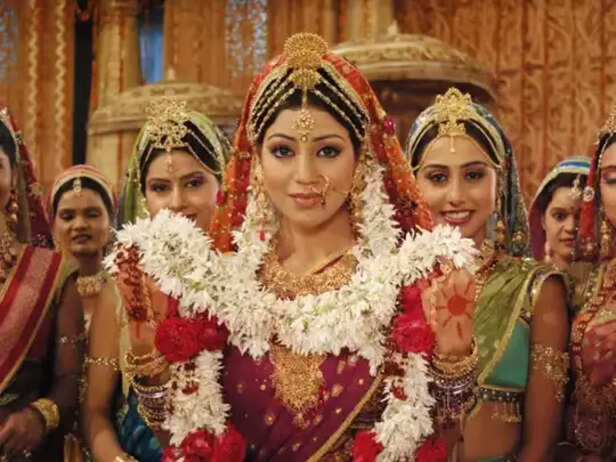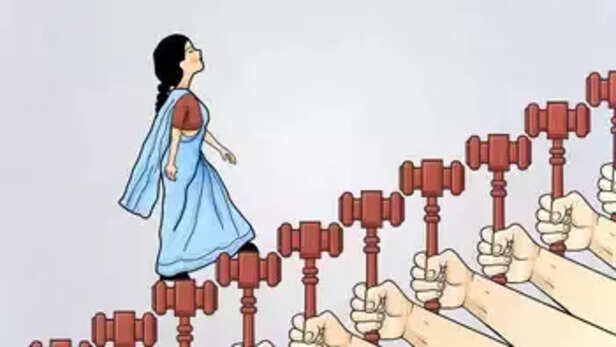Feminism Is Not a Western Concept-Ancient India Gave Women More Freedom Than Today
Riya Kumari | Mar 06, 2025, 20:26 IST
( Image credit : Times Life Bureau, Timeslife )
When people say “feminism is a Western concept,” what they really mean is that they don’t know their own history. The fight for women’s rights in India isn’t about “importing” anything—it’s about reclaiming what was stolen. So the next time someone dismisses feminism as a foreign idea, remind them: India didn’t adopt feminism. India discovered it. And now, we’re just trying to take back what should have never been lost in the first place.
There’s a certain comfort in believing that progress is a straight road. That with every passing century, we are smarter, freer, more enlightened than those who came before us. But history—if you look closely—has a habit of unsettling that belief. Take women’s rights in India. The modern world would have us think that feminism, as a movement, is new here. That the struggle for women’s education, independence, and equality is a recent battle against long-standing traditions. But history tells a different story. A story where women in ancient India had these rights, used them, and thrived—until those very freedoms were taken away. It forces a difficult but necessary question: If women were freer thousands of years ago than they are now, can we really call what we have today “progress”?
1. Women in Ancient India: A Forgotten Reality

Let’s go back a few thousand years. The Vedic period (roughly 1500 BCE–500 BCE) was an age of scholars, seekers, and leaders—and women were all of these things. Women were educated, not just allowed but encouraged to study philosophy, astronomy, medicine, and theology. They wrote scriptures. They debated men in public discourse. Gargi Vachaknavi, a female philosopher, questioned the greatest sages of her time about the nature of existence. Lopamudra, a scholar and poet, composed hymns in the Rigveda—one of the oldest texts known to humanity. These were not exceptions; they were examples.
Women weren’t just intellectuals; they were rulers and warriors. Queens didn’t merely exist as consorts but as sovereigns. Prabhavati Gupta, for instance, ruled vast territories with administrative expertise. Women in certain communities were trained in warfare, responsible for defending their people, commanding armies, and making strategic decisions.
Most importantly, they had the power of choice—over marriage, over their own bodies, over how they lived. Widows could remarry without judgment. Marriage wasn’t seen as their only destiny. The notion that women had to be dependent on men simply did not exist in the way we assume it always has. So, if women had this level of freedom and respect in ancient India, what changed?
2. When Did Women Lose Their Freedom?

The decline wasn’t instant. It was slow, deliberate, and spread over centuries. With the rise of rigid caste systems, political shifts, and foreign invasions, women’s rights became collateral damage in a society growing more hierarchical and patriarchal. Knowledge, once open to all, became restricted. Education for women diminished. Widow remarriage, once accepted, became condemned. Child marriage—once unheard of—became the norm. Practices like sati, where widows were burned alive, emerged not because they were always there, but because society let them take root.
Even clothing, a form of personal expression, became a tool of oppression. In ancient times, women often wore sarees without blouses, draping the fabric in ways that covered them modestly yet comfortably. This was not seen as immodest or inappropriate. However, with changing societal norms, especially during and after colonial rule, the blouse became a mandatory garment, and showing skin was suddenly deemed improper. Today, women are often judged or harassed for wearing what is considered "revealing" clothing, a stark contrast to the freedoms of the past.
And that’s the uncomfortable truth. These injustices weren’t natural evolutions. They were deliberate changes made by societies that decided—somewhere along the way—that women should be controlled rather than empowered. Which means if we want to undo this regression, we have to stop treating oppression as culture and start recognizing it as the deviation it truly is.
3. What This Means for Us Today

Understanding this history isn’t about nostalgia. It’s about remembrance with purpose. Women’s fight for education, independence, and equality today isn’t a demand for something new. It’s a reclamation of something lost. A restoration of a balance that once existed but was broken by time, power, and politics.
So the next time someone argues that feminism is a “Western import” or that tradition has always dictated women’s subservience, remember: Tradition itself was once different. Women were not always silenced. They were not always held back. They were, in many ways, freer in the past than they are now. And if we are to truly move forward, then we must stop thinking of equality as something to be fought for— and start recognizing it as something that should have never been taken away in the first place.
1. Women in Ancient India: A Forgotten Reality

Gargi
( Image credit : Times Life Bureau )
Let’s go back a few thousand years. The Vedic period (roughly 1500 BCE–500 BCE) was an age of scholars, seekers, and leaders—and women were all of these things. Women were educated, not just allowed but encouraged to study philosophy, astronomy, medicine, and theology. They wrote scriptures. They debated men in public discourse. Gargi Vachaknavi, a female philosopher, questioned the greatest sages of her time about the nature of existence. Lopamudra, a scholar and poet, composed hymns in the Rigveda—one of the oldest texts known to humanity. These were not exceptions; they were examples.
Women weren’t just intellectuals; they were rulers and warriors. Queens didn’t merely exist as consorts but as sovereigns. Prabhavati Gupta, for instance, ruled vast territories with administrative expertise. Women in certain communities were trained in warfare, responsible for defending their people, commanding armies, and making strategic decisions.
Most importantly, they had the power of choice—over marriage, over their own bodies, over how they lived. Widows could remarry without judgment. Marriage wasn’t seen as their only destiny. The notion that women had to be dependent on men simply did not exist in the way we assume it always has. So, if women had this level of freedom and respect in ancient India, what changed?
2. When Did Women Lose Their Freedom?

Ramayana
( Image credit : Times Life Bureau )
The decline wasn’t instant. It was slow, deliberate, and spread over centuries. With the rise of rigid caste systems, political shifts, and foreign invasions, women’s rights became collateral damage in a society growing more hierarchical and patriarchal. Knowledge, once open to all, became restricted. Education for women diminished. Widow remarriage, once accepted, became condemned. Child marriage—once unheard of—became the norm. Practices like sati, where widows were burned alive, emerged not because they were always there, but because society let them take root.
Even clothing, a form of personal expression, became a tool of oppression. In ancient times, women often wore sarees without blouses, draping the fabric in ways that covered them modestly yet comfortably. This was not seen as immodest or inappropriate. However, with changing societal norms, especially during and after colonial rule, the blouse became a mandatory garment, and showing skin was suddenly deemed improper. Today, women are often judged or harassed for wearing what is considered "revealing" clothing, a stark contrast to the freedoms of the past.
And that’s the uncomfortable truth. These injustices weren’t natural evolutions. They were deliberate changes made by societies that decided—somewhere along the way—that women should be controlled rather than empowered. Which means if we want to undo this regression, we have to stop treating oppression as culture and start recognizing it as the deviation it truly is.
3. What This Means for Us Today

Women rights
( Image credit : Times Life Bureau )
Understanding this history isn’t about nostalgia. It’s about remembrance with purpose. Women’s fight for education, independence, and equality today isn’t a demand for something new. It’s a reclamation of something lost. A restoration of a balance that once existed but was broken by time, power, and politics.
So the next time someone argues that feminism is a “Western import” or that tradition has always dictated women’s subservience, remember: Tradition itself was once different. Women were not always silenced. They were not always held back. They were, in many ways, freer in the past than they are now. And if we are to truly move forward, then we must stop thinking of equality as something to be fought for— and start recognizing it as something that should have never been taken away in the first place.
